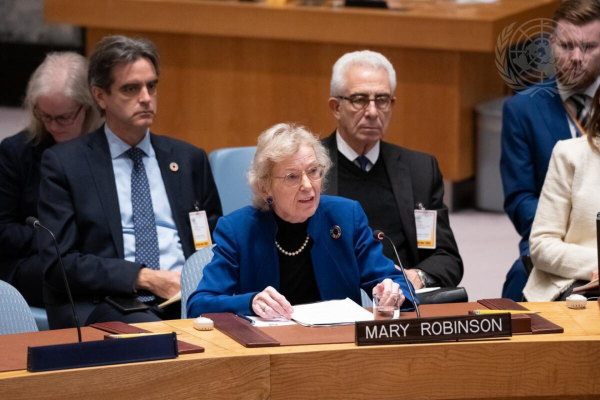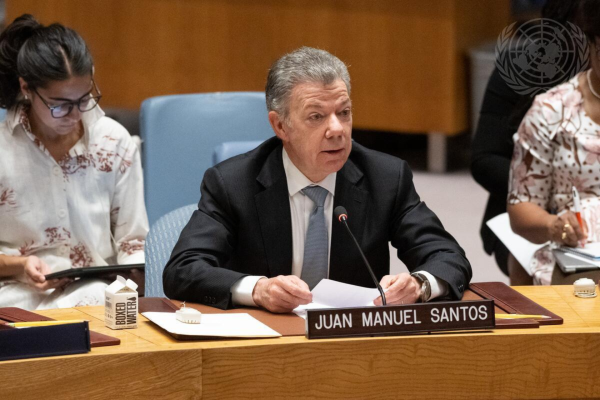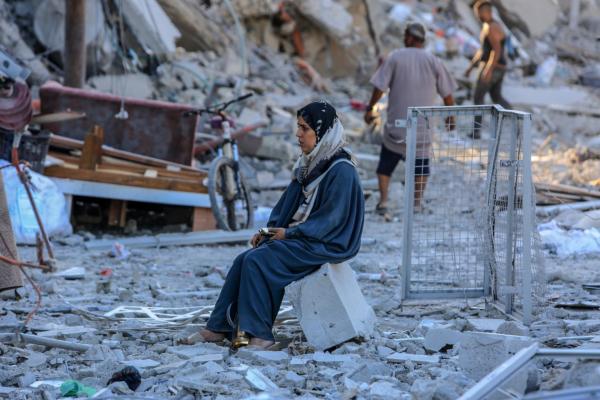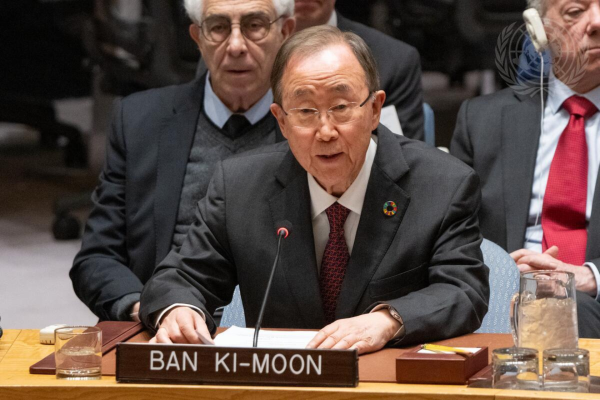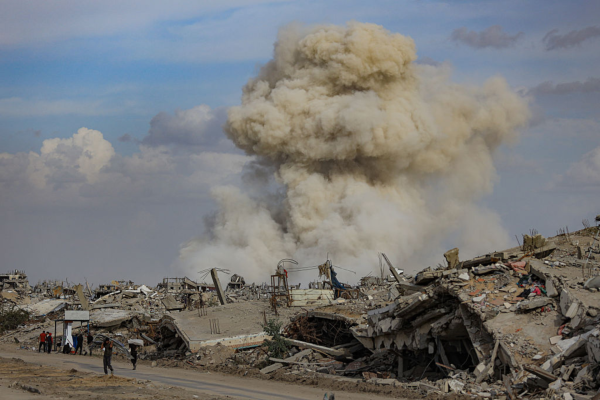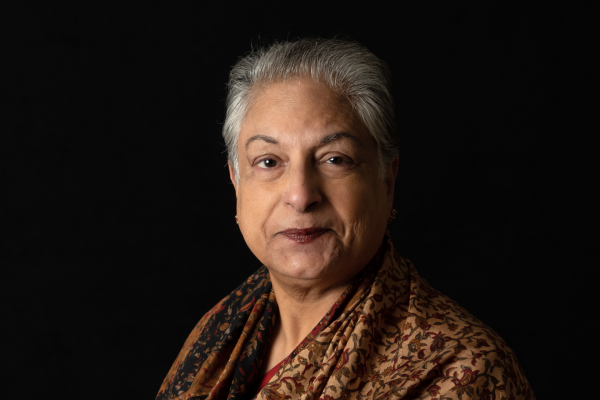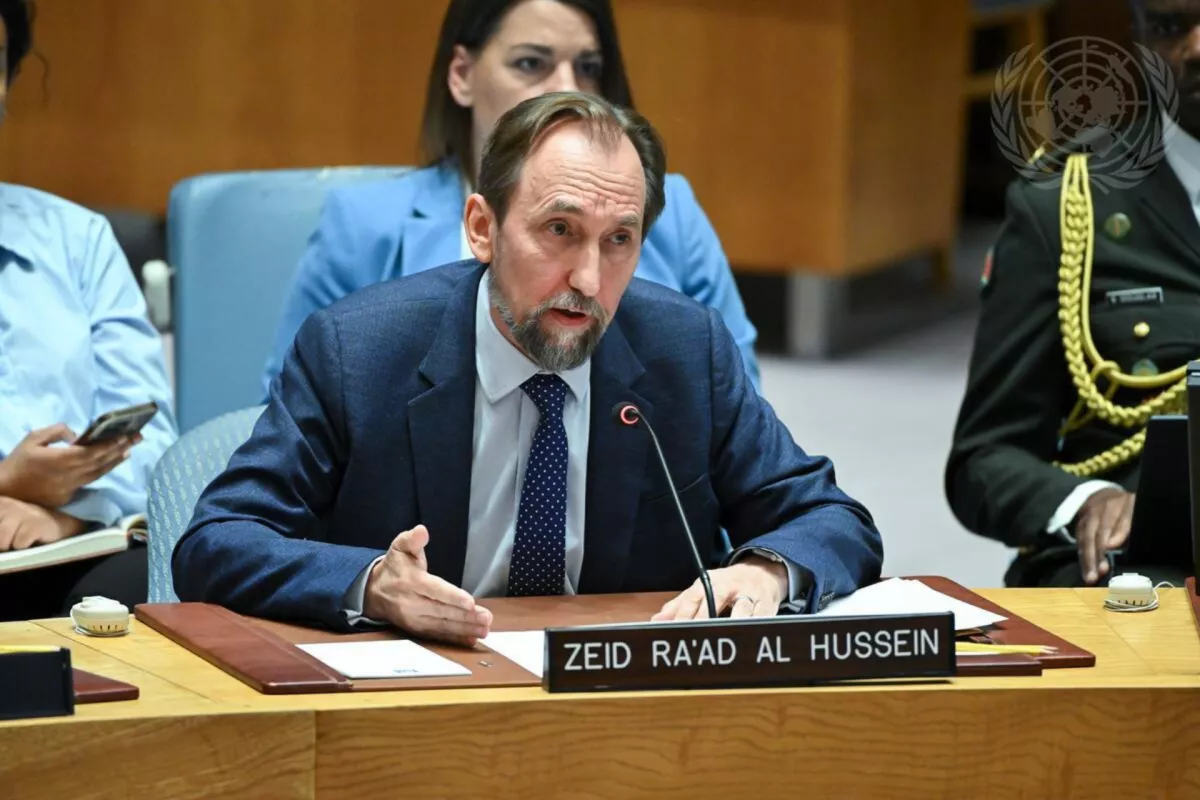
Thank you Your Highness, Excellencies, distinguished delegates, friends
I am grateful to be joining Presidents Mary Robinson and Juan Manuel Santos, as the third external speaker to this morning's session; and would like to begin by thanking our Co-chairs France and the Kingdom of Saudi Arabia – not only for their leadership on this topic, but also for their insistence this conference centres on the specific actions needed to realise a two-state solution.
Our Co-Chairs are also right to think the greatest threat to the viability of a two-state solution is a staggering international community, that lacks an understanding of either what a workable two-state solution actually entails, or of the path we must all take to get there, once the terrible atrocities in Gaza stop. In other words, how can we transition from rubble to renewal without a compelling and credible vision for what renewal means?
Others may argue this differently, claiming the main obstacle to peace is not so much the violent extremists on both sides who demand the complete removal or destruction of the other – that is perhaps too obvious a point – rather it is the filing down in both societies of those who believe peace is possible. Such is the depth of fear, anger, and fatalism that now marks the prevailing mood.
After all, virtually all Palestinians, Arabs, Muslims and many others accuse the Israeli leadership of committing acts of genocide in Gaza, this on top of a long and cruel military occupation of Palestine. The Israeli government, the US Administration and some European leaders see Israel as fighting a violent enemy which threatens it existentially, an enemy that murdered Israeli civilians cold-bloodedly almost two years ago, and took hostages. Many people around the world, see truth in both views.
Despite conceding the reality of the present moods and hatreds swirling within the two populations, what is fortunate about a vision of two states is that – like any other vision, it need not correspond exactly with the current psychology of Israelis and Palestinians. A vision is not for today’s emotional audit, but for a tomorrow when new imperatives have inspired both populations, and not because the vision would be something utterly fanciful; quite the opposite, a two-state solution would have to be practical to gain support.
This is why, one of the first lessons to draw on from decades of failed efforts to resolve this conflict is that wholesale vagueness about the endgame is not strategic— it is dangerous. It empowers rejectionists and weakens those who believe peace is still attainable.
Today, as we have heard many speakers say, leading figures in Israel’s far-right government are openly articulating a vision of permanent occupation, territorial annexation, and forced displacement. And they are acting accordingly, taking steps every day to implement their vision through concrete policies and actions on the ground. The international community cannot counter this with carefully worded platitudes. What is needed is a clear, collective affirmation of the two-state solution—not as an abstraction, but with specific policy commitments: a full end to the occupation, borders based on the 4 June 1967 lines, and a sovereign, contiguous Palestinian state. Short of this, recognition of Palestine will remain symbolic and will do little to transform the lives of Palestinians on the ground and effect meaningful progress towards Palestinian self-determination.
Now this is not a fantasy.
Palestinians and Israelis, working together, have developed a vision for a two-state solution that can work, and they have devised elegant and symmetrical solutions to issues like settlements, refugees, and Jerusalem; core issues that have divided them in the past.
The first point this vision articulates is this: a viable peace must address the emotional and deep connection felt by both Israelis and Palestinians to all the land, from the river to the sea. The vision also addresses the need for two distinct and sovereign states as a means of facilitating self-determination for two peoples and ensures a complete end of the military occupation. And it also overcomes past obstacles to the achievement of a two-state settlement, proposing a just solution for the Palestinian refugee population and a framework for Jerusalem while guaranteeing access to it. And it achieves all of this in a way that ensures Israel can maintain a Jewish voting majority.
So how can this be done?
There would be two states, but one homeland. The path to reach it entails as a starting point an acceptance of the Armistice Line as it was prior to 4 June 1967 as the border between the two states -- with, at most, minor territorial adjustments, rather than more significant swaps or the sweeping annexation contemplated by other proposals. Israeli settlers who wish to remain in their homes would have the option of becoming permanent residents of the State of Palestine. They would pay their taxes, abide by local law, and enjoy full protection of their rights, as is the case with permanent residents in almost all countries. All Palestinian refugees will, in turn, have the right to become citizens of Palestine, but they would also have the option of becoming permanent residents of Israel, creating a path for return. Israeli Arabs would remain Israeli citizens and would be guaranteed full equality. Over time, there will be freedom of movement for all throughout and across both states. Jerusalem would be given special status. There will be some confederal institutions, including a human rights court as an appellate body.
A mechanism will need to be devised to bind the two states together—possibly through a cleverly designed, regionally anchored security arrangement—to prevent unilateral abrogation. As a first urgent transitional step, a reconstruction and rehabilitation mission should be established with an international mandate and based on a regional partnership. To succeed, this mission must prioritise restoring political and economic links between the Gaza Strip and the West Bank, which Israel and the PLO have recognized to constitute a single territorial unit.
Finally, Israel’s approach of achieving security through domination and fragmentation of Palestinian life— by imposing a stranglehold on Palestinian territory, institutions, and leadership, and by the undermining of UNRWA over the years — has hitherto produced only a notion of security for Israel. It has deepened Palestinian dispossession, inflicted great harm and degraded the Palestinian civilian population and threatened regional stability. Years of these measures, and the expensive fortified fences and sensor arrays surrounding Gaza, did not prevent the atrocious attacks of October 7. The lesson for Israel is not to double down on fortification, separation, and militarisation — after all, there will always be new ways to inflict harm on Israeli citizens in the absence of a just peace. What has worked has been mutuality —a sense of equality in status and obligation–and cooperation. This is why Israel’s peace treaties with Egypt and Jordan have been so durable. They were born not out of dominance, but respect for sovereign equality and territorial inviolability.
It is on these foundations that this vision of meaningful and durable renewal, this vision of Two-States One Homeland, was conceived — not in abstraction, but grounded in law, shaped by pragmatism, and sustained by a shared attachment to the land that both Israelis and Palestinians call home.
I thank you for your attention.


